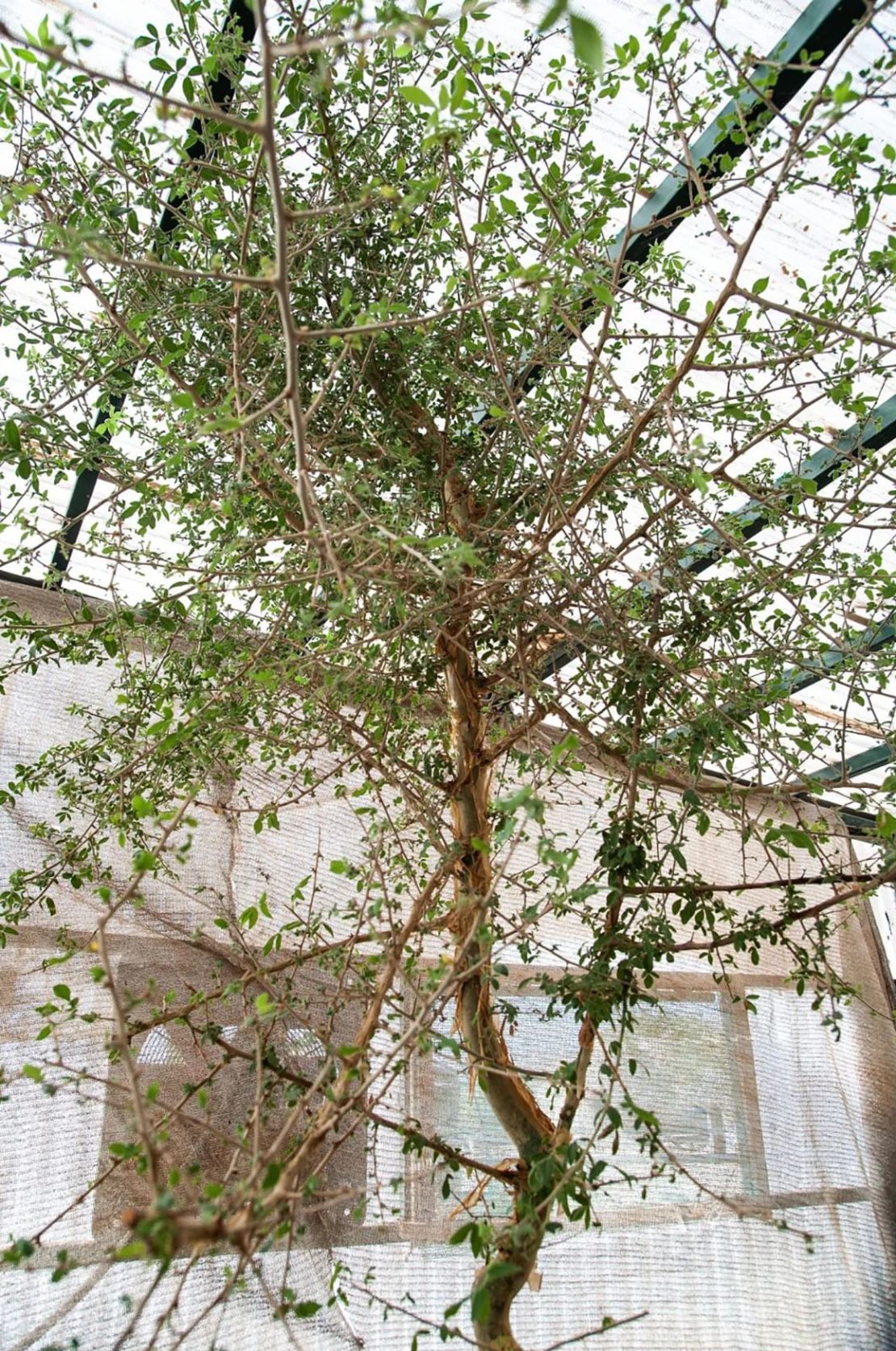(CNN) –– A team of botanists was able to grow a species of tree thought to be extinct from a 1,000-year-old seed discovered in a cave in the Judean Desert in the 1980s.
Researchers involved in the project believe the tree species may have been the source of a healing salve mentioned in the Bible and other ancient texts.
Discovered during archaeological excavations in the Lower Wadi el-Maquq, north of Jerusalem, the ancient seed was confirmed to be in perfect condition. But the scientists carrying out the new research were unable to identify the type of tree from the seed. Louis L. at Hadassah University Medical Center in Jerusalem. The seed for further research was planted 10 years ago by a team led by Dr. Sarah Challen, who founded the Boric Natural Medicine Research Center.
Salon said the tree may be the source of the biblical “Zori,” a medicinal plant extract associated with the historical region of Gilead north of the Dead Sea in the Jordan Rift Valley, a mountainous and forested region. Now part of Jordan.
The team's findings are described in a published study September 10 in the journal Communications BiologyUnravel some of the secrets surrounding the origin of this enigmatic model, which Salon has nicknamed “Sheeba.”
To develop this model, Dr. Elaine Solovey used a procedure during earlier research on 2,000 date palm seeds. The method involves soaking the mysterious Jewish desert seed in water mixed with hormones and compost and planting it in a pot of sterilized soil.
“After about five and a half weeks, this nice sprout emerges,” Salon said. The shoot tip is protected by a kind of cap called an operculum. Once it was removed, the team used radiocarbon dating of the organic material to determine the age of the plant, and found that the specimen dated between 993 and 1,202 AD. c.
In no time, the tree began to grow leaves. Salon shared images of the tree and its leaves with botanists around the world. An expert suggested that it belongs to the genus Commiphora. The group includes about 200 species of trees found mainly in Africa, Madagascar and the Arabian Peninsula.
Sallon shared the leaf sample with study co-author Dr. Andrea Weeks, an associate professor in the Department of Biology at George Mason University in Fairfax, Virginia. Weeks sequenced the tree's DNA and confirmed the initial identification. However, the specimen did not match any known Commiphora species in their database.
With its unique genetic fingerprint, the unknown Commiphora species may represent an extinct taxon that was once native to the region around the Judean Desert, according to the study.
But now for more than 14 years, this almost 3 meter tall tree has neither flowered nor fruited. Without these characteristics, cryptic species cannot be identified with certainty, the study adds.

Based on historical research, Sallon believed that the tree was the source of a desirable aromatic resin that ancient texts from the region, including the Bible, described as “balm of Judea” or “balm of Gilead.” At that time the perfume was exported all over the world.
“We planted it in 2010, and now we're in 2024. Why did we wait so long to publish the research? Because I wanted to make sure it wasn't Judea's balm. And how could he know for sure? The smell of it,” Sallan said.
However, the tree associated with the myrrh tree, known for its resin, never gave off any type of odor. Once the plant matures, about 3 years old, the team conducts a phytochemical analysis of its resin, leaves and twigs to identify the aromatic compounds found in myrrh. However, nothing was found, Challen said.
Instead, the team found some compounds known for medicinal use, including “guggulterols,” which were identified as having cancer-fighting properties from the resin of a related tree species, Commiphora wightii, the study noted.
“Based on all these factors, it is not Judean balsam, but rather one of its close relatives and non-fragrant Commiphora, which is a treasure trove of medicinal compounds,” he said.
Because of those healing compounds, Sallon and his colleagues concluded that the tree may have been the source of a medicinal ointment called chori, which is also mentioned in historical texts.
According to Dr Louise Colville, senior researcher in seed and stress biology at the Royal Botanic Gardens, Kew, London, seeds with such a long lifespan are rare. Colville was not involved in the investigation.
“The amazing thing about this story is that it's just a seed that's so lucky to have the chance to germinate,” he said.
“Working in a seed bank and seeing the potential for that extreme longevity, by saving and preserving seeds, gives hope that at least some will survive for a very long time.”





